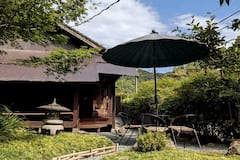Japanese cuisine is constantly ranked as one of the top 10 best cuisines in the world, with traditional dishes such as sushi, sukiyaki, sashimi and yakitori appreciated around the world. Sushi, being the most well known dish outside of Japan, traditionally is vinegared rice combined with raw or slightly torched seafood.
Before you chomp down on that plate of delicious-looking sushi, do you know what type of sushi you are eating? What is the best way to enjoy this famous Japanese delicacy? Is sushi a common everyday food or is it just for the rich? Regardless of whether you are travelling to Japan or just want to learn more about this popular Japanese delicacy, enhance your understanding of sushi with this guide.
1. Different types of sushi
Sushi used to take on a different definition in the past. Back in the bygone Edo period, pickled fish preserved in vinegar was referred to as “sushi”. Nowadays, sushi refers to a dish containing vinegared rice with raw or torched seafood. We’re also beginning to see the incorporation of other ingredients such as vegetables in sushi. Because of the vast possibilities of ingredients which can be used together with vinegared rice for that plate of tantalising sushi, there are different forms which sushi can take. Below is a list of the popular types of sushi:
a. Nigiri

Nigiri is a small hand-pressed mound of rice topped with various types of fish or seafood, including maguro (tuna), unagi (eel), ebi (shrimp) and tako (octopus). Tamago (cooked egg) is also commonly used in nigirizushi. A dab of wasabi (Japanese horseradish) is often put in between the rice and raw fish, to suppress bacteria that may cause food poisoning when eating raw food.
b. Gunkan Sushi

Besides vinegared rice and different seafood ingredients, dried seaweed is also used in gunkan sushi. The Japanese term “gunkan” translates to “battleship” in English, which can be easily remembered because this type of sushi is shaped like a little boat with the paper-like seaweed wrapped around the mound of rice. Salmon, sea urchin or flying fish roes are the most common types of ingredients being used in gunkan sushi.
You might be interested in these Airbnbs!
c. Norimaki

Similar to gunkan sushi, norimaki combines sushi rice, seafood and dried seaweed to make the dish. The difference between norimaki and gunkan sushi is that the rice and seafood are rolled in the nori (dried seaweed) sheets in norimaki. There is a diverse range of norimaki, or sushi rolls you can find. Interestingly, norimaki is more commonly found outside of Japan than in the country itself.
d. Temaki Sushi

Temaki sushi is a type of hand rolled sushi, filled with sushi rice, seafood and vegetables in a nori cone. While both norimaki and temaki sushi are hand rolled, they differ in terms of shape. Popular fillings include tamago, negitoro (green onion with minced fatty tuna) and umeshiso (a paste made of fresh shiso leaf and pickled plum).
e. Inari Sushi

Instead of using dried seaweed to wrap around the ingredients like in norimaki, sushi rice is stuffed in inari age (seasoned deep fried tofu) skin. This vegetarian-friendly sushi has a slightly sweet and moist tofu skin that blends perfectly with the strong taste of the rice, making it a simple and inexpensive type of sushi to fill your stomach with.
f. Chirashi Sushi

Most people are very familiar with the five types of sushi introduced above, but not many know that chirashi sushi is also another form of sushi dish. This is a dish in which raw seafood, mushrooms and vegetables are spread over sushi rice. It looks just like the popular seafood donburi, except that donburi uses unseasoned rice instead of the vinegared sushi rice.
There are many more types of sushi than just the above-mentioned. Discover 10 of the quirkiest types of sushi around the world in this article: World’s Weird Sushi Guide.
2. Sushi vs Sashimi

Many people outside Japan tend to use these two terms interchangeably, but this is not correct. Sashimi is fresh raw fish, such as salmon and tuna sliced and served without rice. This is different to sushi, which is technically “sashimi + vinegared rice”. So remember, sashimi is raw seafood without rice, sushi is raw/torched seafood on rice.
3. How to eat sushi the correct way
There are so many sushi lovers outside Japan, but do you really know the proper dining etiquette to sushi? Before you tuck into the delightful cuisine when in Japan, learn how to eat sushi the right way as respect for the Japanese food culture.
Rule #1: Use fingers for sushi rolls
You don’t need a pair of chopsticks to eat sushi. Instead, it’s perfectly fine to use your fingers to eat the Japanese delicacy the traditional way. Of course, remember to clean your hands with the wet towel provided in the restaurant before eating! Chopsticks are only used when eating sashimi, although you will be excused if you prefer using chopsticks.
Rule #2: Never combine ginger and sushi
Gari (pickled ginger) is served on a plate in front of you when you are seated. However, contrary to common practice, you should never eat it together with the sushi! The gari is meant to cleanse your palate between each sushi so that you can taste the subtle differences with each delicate piece served.
Rule #3: Never shake soy sauce off sushi
There is usually a small bowl for you to pour soy sauce for which you use to dab the sushi in. Pour only what you need into the bowl, as wasting soy sauce is taboo in fine Japanese dining etiquette. Pouring too much into the bowl also implies you suspect the fish is not as fresh and hence requires a lot of seasoning to “cover up”. When you dab the sushi in the soy sauce, never shake the sauce off the sushi. In any case, if you only pour a little sauce into the bowl, you won’t need to shake it off.
Rule #4: Wasabi should not be mixed with soy sauce
If you have been mixing wasabi into your bowl of soy sauce, you have been doing it wrong. Do not mix wasabi with soy sauce. To spice up your dish with wasabi, brush some onto the fish with either your chopstick or a piece of ginger.
Rule #5: Eat the sushi upside down
Now that you are ready to put that piece of sushi into your mouth, pick up a piece from the plate by using your thumb and middle finger. This allows you to feel the texture and keep the sushi together. Turn the sushi upside down by rotating it counterclockwise, and dip only the fish into the soy sauce you have prepared. Do not dip the rice into the soy sauce as it will change the texture of your bite. Do note that you should not dip sushi pieces with unagi and those with sauce on top. Remember the fish should be against your tongue as you pop the sushi piece into your mouth, so that you can take in its complex flavours before chomping down the entire piece in one bite.
Sounds complicated with too many rules to remember when eating sushi? Watch this interesting video to learn how to eat sushi the correct way!
4. Is sushi expensive and where can I eat it?
Eating sushi can be an expensive affair, depending on where and what you seafood you choose to eat. Expect to pay from 10,000 JPY (87.90 USD) to enjoy a sushi set meal in a traditional classy sushi restaurant in Japan. A sushi meal at the famous Michelin three-starred Sukiyabashi Jiro (すきやばし次郎) in Tokyo’s affluent Ginza district will set you back by about 30,000 JPY (263.70 USD).
Fortunately, there are numerous reasonably-priced restaurants to enjoy the Japanese delicacy too. Head to the kaiten-zushi places found everywhere in Japan, where the sushi plates circle around the dining area on a conveyor belt. In such a restaurant, you can either wait and pick up your favourite sushi from the conveyor belt when it approaches you, or order them directly. Kappa Sushi (カッパ寿司) is a popular sushi chain, serving sushi from an affordable 108 JPY (0.95 USD) each. Or you can also make your way to the fish markets sprawled across different parts of Japan where quality sushi meals without digging too deep into your pockets. Check out the famous Tsukiji market in the early hours of the morning for some delicious sushi - it won’t get fresher than this. For more information, read our article on the best standing sushi shops in Tsukiji.
5. Sushi seasoning

From the earlier sections, you have learnt about the different forms of sushi, how to eat it the proper way, where to go for a delicious sushi meal, how much it costs, as well as the difference between sushi and sashimi. Are you wondering what exactly goes into the rice to make it unique from regular unseasoned rice? The vinegar is the most important seasoning used in making sushi rice, and it is not just any vinegar.
Sushi vinegar is made by mixing rice vinegar with salt and sugar, which can be purchased off the shelf. It can also be prepared easily on your own, by bearing in mind to add as much sugar as the amount of rice vinegar used, while adding only one-sixth of the proportion for salt. Often, a dash of wasabi is also put between the sushi rice and fish or seafood, to enhance the flavour as well as to prevent occurrence of food poisoning from eating raw food.
Appreciate Japanese culture through sushi
Sushi is probably the most famous Japanese dish outside the Land of the Rising Sun, so it is definitely great to gain a better understanding of the delicacy. Even if you are not likely to visit Japan anytime soon, knowing what exactly sushi is and how best to eat it like a local will help you to better appreciate Japanese culture through its cuisine. Indeed, one of the best ways to experience the local culture is to understand it through its local delicacies. Enjoy!
History
Get Trip101 in your inbox
Unsubscribe in one click. See our Privacy Policy for more information on how we use your data
























Create an account to